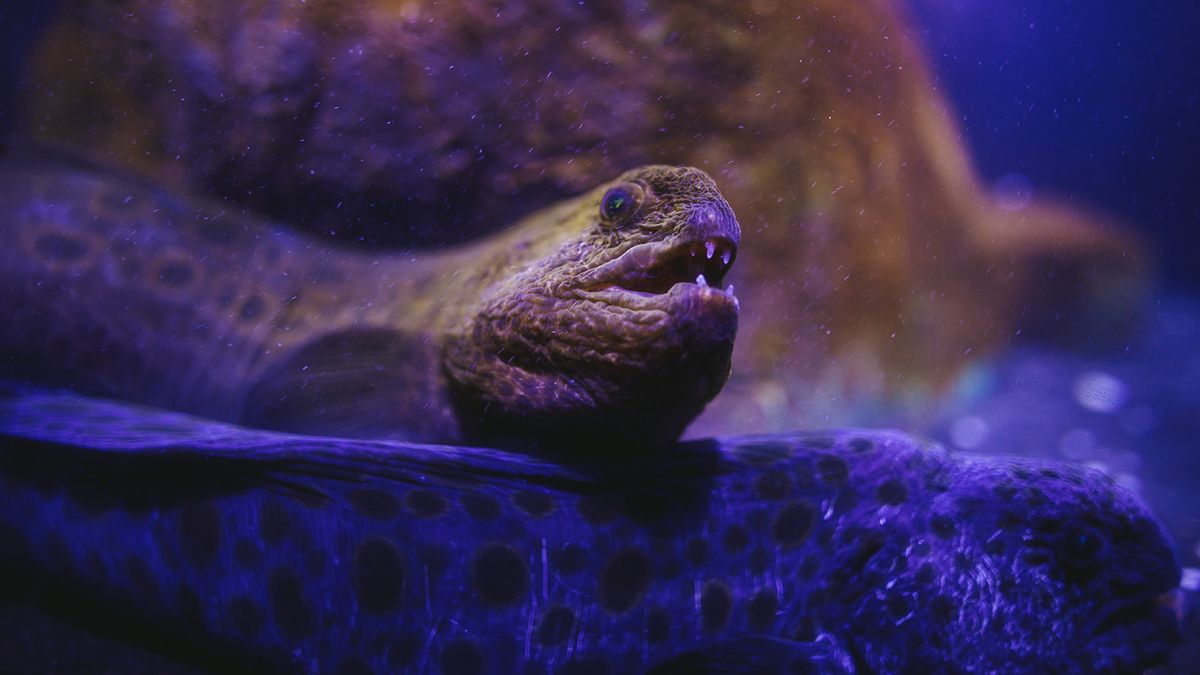Juvenile wolf eels start out with bright orange coloration and dark spots, perfect for camouflage among kelp forests. As they grow, they shift to a slate-gray or greenish tone. When juvenile wolf eels mature, they become young adults that eventually seek out mates.
Wolf eels are also known to mate for life. A pair takes special care in their reproductive rituals. During reproduction, the female lays thousands of eggs in a neat sphere roughly the size of a grapefruit.
The female continues massaging the egg mass, encouraging proper development as the eggs periodically rotate. This helps to circulate water and oxygenate the eggs.
When the eggs hatch, the larvae float up in the water column before eventually settling down to the sea bottom. This level of parental investment, including egg guarding and care by both parents, is uncommon among most fish species.











